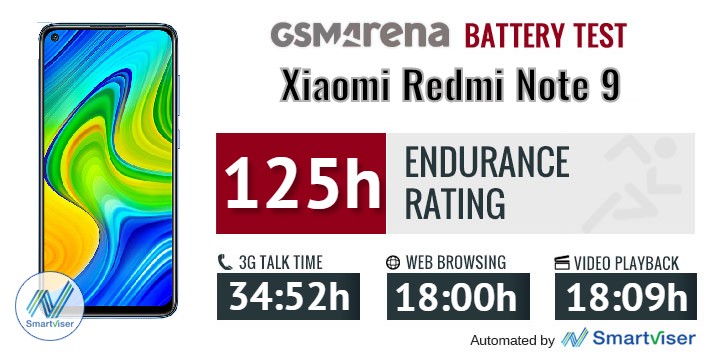Xiaomi Redmi Note 9 review

LCD IPS panel with an off-centered punch-hole
The Redmi Note 9 uses a 6.53-inch IPS LCD panel with a 1080 x 2340px resolution making for a trendy 19.5:9 aspect ratio. The bezels are thin enough, so they don't distract while the cutout for the front-facing camera seems of the smaller kind compared to other LCD-based solutions. It's also neatly tucked away closer to the upper-left corner of the screen, so it doesn't eat away too much of the screen real estate.
Unfortunately, the Redmi Note 9 falls victim of that typical LCD glare around the punch-hole. It's barely visible in most cases and wouldn't bother most of you, but it's there, and you can see it on a white background. Turning on the dark mode paints the system menus in black so you won't be seeing it most of the time. Also, it's important to note that we've seen way worse glares even around the bottom lip.

What's more important is the max brightness. Sadly, the Note 9 falls behind the competition in this regard. It's advertised that the screen can go up to 450 nits, and we found that to be true but only in Auto mode peaking at 466 nits. Cranking up the slider manually to 100% will only get you up to 370 nits. On an LCD, these values might not be enough for the most comfortable reading outdoors.
The contrast ratio is not stellar either but it's fine for a budget phone.
Here's how it stacks against the competition.
| Display test | 100% brightness | ||
| Black, |
White, |
||
| 0.303 | 421 | 1389:1 | |
| 0.42 | 575 | 1369:1 | |
| 0.355 | 456 | 1285:1 | |
| 0.487 | 616 | 1265:1 | |
| 0.298 | 370 | 1242:1 | |
| 466 | :1 | ||
| 0.343 | 451 | 1315:1 | |
| 0.328 | 528 | 1610:1 | |
| 0.317 | 477 | 1505:1 | |
| 0.395 | 581 | 1471:1 | |
| 0.341 | 500 | 1466:1 | |
| 0.53 | 741 | 1398:1 | |
When it comes to color accuracy, the Note 9 is no champion either. With the default color mode, the phone had 7.7 average dE2000, while the maximum dE2000 was a whopping 15.6. Most of the blue colors, along with cyan and white, appeared to be way off.
Surprisingly, the "Saturated" mode can lower the average dE2000 to 5.7 while "Standard" brings it down to 3.7 which is a rather good value if you are into color-accurate reproduction.
HDR10 support is non-existent, whereas the Note 9S can give you that. We've checked the Netflix app, and the phone is compliant with the Widevine L1 standard and supports Full HD playback.
Battery life
As expected, the Redmi Note 9 has outstanding battery life owing to the large 5,020 mAh unit and power-efficient chipset. We found that the overall battery score is quite similar to the Redmi Note 9S. You can rely on long video playback and web browsing without the need of charging.

Our battery tests were automated thanks to SmartViser, using its viSerDevice app. The endurance rating above denotes how long a single battery charge will last you if you use the Xiaomi Redmi Note 9 for an hour each of telephony, web browsing, and video playback daily. We've established this usage pattern so that our battery results are comparable across devices in the most common day-to-day tasks. The battery testing procedure is described in detail in case you're interested in the nitty-gritty. You can check out our complete battery test table, where you can see how all of the smartphones we've tested will compare under your own typical use.
When it comes to fast charging, however, the Note 9 isn't a great performer. The 18W charging limit can only get you this far with a battery that's rated at 5,020 mAh. About 2:33 hours will get you from 0 to full while in 30 minutes, you can get just 31% of the charge back.
Speaker test
The Redmi Note 9 offers just one bottom-firing loudspeaker, which isn't the loudest one around, but the sound quality is somehow decent. It sounds flat, but the vocals are clear. We weren't expecting a stellar audio playback experience anyway.
Use the Playback controls to listen to the phone sample recordings (best use headphones). We measure the average loudness of the speakers in LUFS. A lower absolute value means a louder sound. A look at the frequency response chart will tell you how far off the ideal "0db" flat line is the reproduction of the bass, treble, and mid frequencies. You can add more phones to compare how they differ. The scores and ratings are not comparable with our older loudspeaker test. Learn more about how we test here.
Audio output quality
We've recently discontinued our audio output quality test.
The reason for that is that most phones that arrived for testing were already excellent in this regard and whatever difference there was, it was marginal and probably indistinguishable to anything but our lab equipment.
Reader comments
- Anonymous
- 27 Sep 2023
- Nu6
Problem am facing now
- Shreya dutta
- 25 Aug 2023
- X%Q
Mine also exactly the same redmi ph is having problems
- Stylz
- 22 Feb 2023
- eEV
Phone has performed amazingly for 3 years. SOLID! Great battery. Zero issues until MIUI 13 which points to MIUI rather than the phone